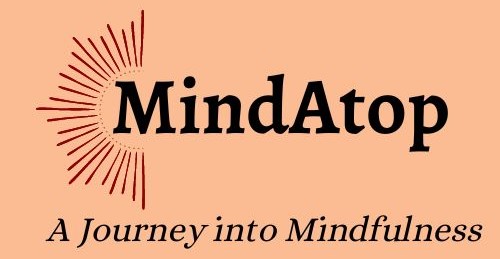The Myth of Right and Wrong
Is right always right? What if everything you think you know about right or wrong is like a single thread in a vast, tangled web—only a tiny fragment of a much more complex whole? This article unravels the mystery of right and wrong—showing how perspectives clash, why judgment divides us, and how a surprising shift can heal even the deepest conflicts.
Table of Contents
Who is right?
A family is driving through a village when they spot an orange cow grazing by the roadside. The little boy lights up and says, “Look! This village has orange cows!” His mother smiles and gently corrects him, “No dear, you can’t say the village has orange cows. You can only say that this cow is orange.” The father chuckles. He adds his twist, “Actually, you can’t even say this cow is orange. You can only say that the side of the cow we’re seeing looks orange.”
Caught in the dilemma of right and wrong?
Who was right?
The mother made sense—until the father added a deeper lens. So, was she wrong? Not at all. Each one was right, in their own way. That’s the point. Truth can have layers. The same moment can hold multiple “rights,” and none of them cancels the other. This tiny episode mirrors how we live and think—grasping partial truths, convinced they’re the full picture.
Every Perspective Comes with a History

Think of a meeting at work. You believe a project should go in a specific direction. A colleague believes otherwise. You’re both confident in your choices. Each one sees logic, sense, even evidence in their position. But beneath all this, what each person is really reflecting is their own conditioning, experience, and value framework. Just take a step back: both of you are drawing from different experiences, different fears, different hopes.
No one is right or wrong. Each of you is standing on a different hill, looking at the same horizon from different angles.
Truth is rarely a fixed point. It bends and shifts, depending on who’s looking and where they’re standing. A metal disc may look like a circle to someone facing it, but the same disc might look like a straight line to another viewing it from right angles. What’s “right” for one can feel wrong to another—not because one is flawed, but because both are framed differently.
What is Right and What is Wrong for different stakeholders
Let’s take an example of a household.
A wife wants a beautiful, expensive sofa that makes the living room shine. She thinks of comfort, elegance, and what guests will feel. The husband, however, sees no need for change. “The current sofa works fine,” he argues. “Why spend unnecessarily?” He thinks of savings, practicality, and future priorities.
The wife sees the sofa as a reflection of their lifestyle and how guests would perceive them. The husband sees the old one as good enough and prefers to direct the funds to something more pressing.
Who is right?
Ask any one of them—and they’ll be convinced it’s them. Ask a third person—and you’ll likely hear, “Both have a point.” That’s the magic of perspective and there lies the rub too. From outside, we can be neutral. But from within, our stand becomes our truth.
Birth of a Conflict
When we believe that our truth is the truth, we begin to see differing opinions not just as different—but as wrong. The stronger our attachment to our view, the more resistant we become to others’. This is where conflict begins—not in difference, but in intolerance of difference.
Conflict doesn’t start when people see things differently. That’s completely normal. That’s human. Conflict begins when we can’t accept those differences. When we are left blindfolded in our own world of right and wrong.
And it happens so quietly. We start feeling irritated, unheard, misunderstood. The stronger our attachment to our own “rightness,” the more we resist another’s. And soon, that resistance shows—in words, in tone, in energy.
It’s not about logic anymore. It’s emotional. It’s personal.
Does Upbringing Shape Our Truths?

Even people raised in the same household, by the same parents, with similar exposures—turn out vastly different. Siblings are the living proof. However, even if differences of opinion within a family may sting, but rarely do they erupt into lasting conflicts because there’s love and history cushioning them.
But when strangers are brought together—like in marriage, work, or teams—differences arise without that buffer. There’s no bank of unconditional acceptance. Add societal expectations to the mix, and you have a pressure cooker.
So, if even shared upbringing of siblings doesn’t ensure similarity, how can we expect strangers—colleagues, partners, friends—to match our internal compass?
And yet, we do. We expect people to know what we value. To meet our silent standards. To behave, respond, and decide like we would. When they don’t, we feel let down. We say they don’t care.
We often impose what we call ‘minimum expectations’—things we believe are natural for the other person to understand or do. But the other person might not see them as minimum. They might not even see them at all. This creates friction.
Expectations are often mistaken as the cement of close relationships. But that’s a mistake—a blunder, in fact. Expectation demands, crushes and smothers while Acceptance embraces, frees and nurtures.
So, What's the Real Problem?
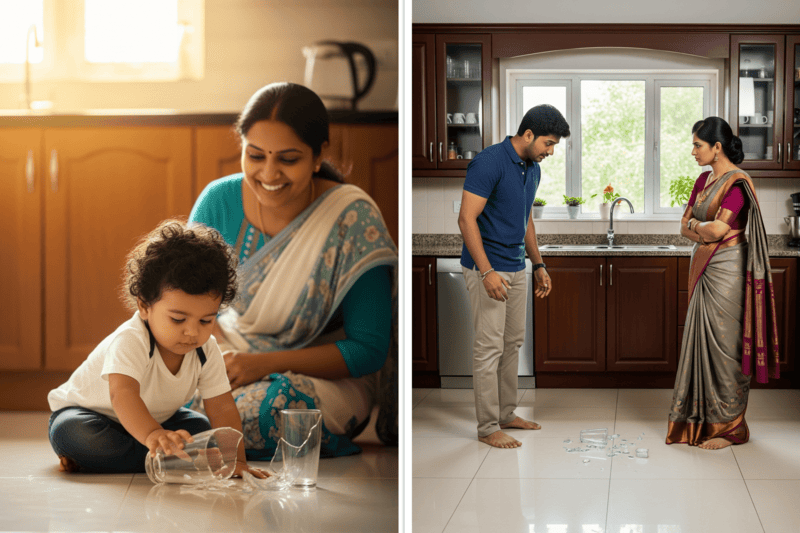
Are people’s actions the real problem? Or is it our inner benchmark of what should happen? We often think we’re upset because of what someone did. But it’s really because we expected them to do differently.
Think about it. A toddler breaks a glass. You smile, pick up the shards, maybe even laugh. Now imagine an adult doing the same thing—especially someone you’re already annoyed with. Your reaction changes, doesn’t it? Who is right or wrong here? A toddler breaking a glass doesn’t irritate us the same way an annoying adult does. Why? Because we have no expectations from the toddler.
The difference wasn’t in the action. It was in your expectation. And that’s where trouble starts—not in what others do, but in how tightly we grip our ideas of how they should be.
The Dangerous Comfort of Self-Righteousness
Some of us hold too tightly to what we believe is “right.” Their list of ‘wrongs’ is long, and so is their list of those who’ve done unpardonable things. The more outspoken ones among them proudly say, “I call a spade a spade,” not realizing their ‘spade’ might just be their own tinted version of reality.
These people don’t struggle because the world is difficult. They struggle because their inner world is rigid. And that rigidity collides with reality at every turn.
The narrower the window through which we view right and wrong, the more isolated and frustrated we become. Life doesn’t fit neatly into moral compartments—it spills over in unpredictable shades.
What Really Is a Spade then?
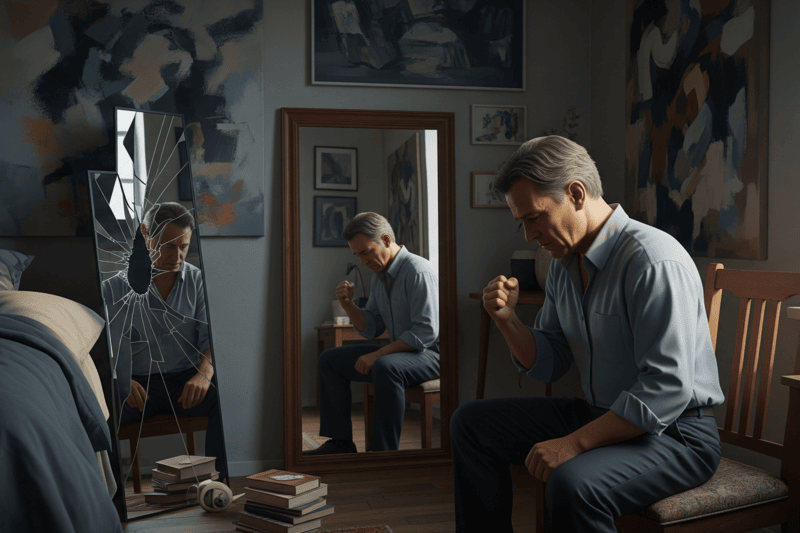
Mostly, we don’t see the complete reality. But we think we see it. We only see our own reflection, our interpretation of reality. Our attitude shapes our attention. Our history filters our understanding. And the more strongly we identify with these filters, the harder it is to let someone else in.
Truth becomes a possession. A battle. And the more we defend it, the more isolated we become.
Basically, the more attached we are to our ‘rightness’, the more distorted our vision gets. And the more we resist seeing this, the deeper we spiral into conflict. It’s not the differences that create tension. It’s our inability to see beyond our mental frameworks that does.
So, what does it mean? Is there nothing called truth? Or should we become spineless and start towing the line of others?
None of these… Being more open to others doesn’t come at the cost of losing your integrity. In fact, it is the other way round. Your openness actually creates more safety in the mind of others. It is then when they start to understand deeply. The stage is set for harmony and change.
Let’s continue to see how this happens exactly.
Beyond Right and Wrong—Unconditional Acceptance: The Game Changer

Have you ever wondered why little children feel so lovable, even when they mess up or throw tantrums? It’s not just their cuteness. It’s their acceptance. They don’t hold grudges. They cry, then smile again. They don’t judge as we adults do.
They accept us—completely, even when we are distracted, impatient or disturbed. They just be there on their own. And in return, we feel safe to just be on our own too. No pressures, no compulsions.
That’s why we love them.
This is nature’s secret law: acceptance brings love. Wherever there is real acceptance, love flows freely.
So, what if we practiced this deliberately—with adults, with ourselves, with those we are in conflict with?
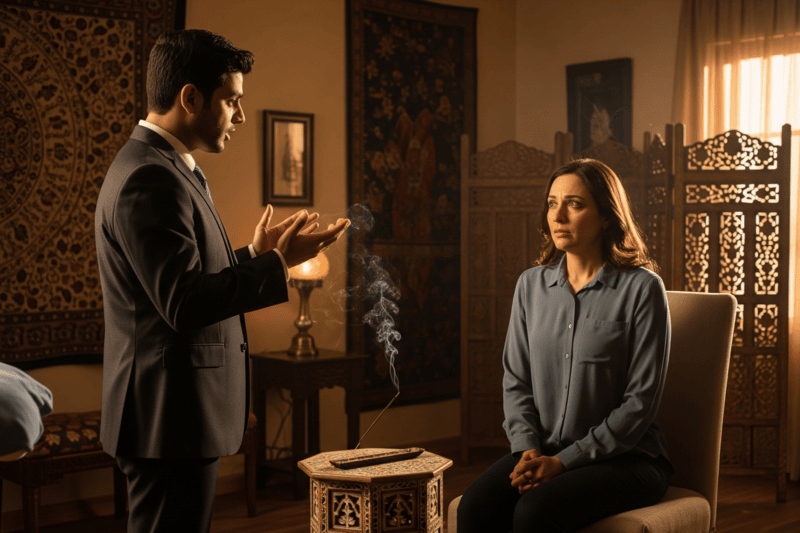
Change begins to happen. Not forced—but it emerges, completely by itself. This is not wishful thinking. It’s the very foundation of Client-Centred Therapy, one of the most successful psychotherapy in modern world.
It’s core insight—People don’t change when you try to fix them. They change when they feel accepted.
When people feel accepted—not judged right or wrong—they begin to shift. Not because they’re told to. But because they feel safe to.
But We Swear by Expectations Instead—Right or Wrong
Despite knowing all this, we still live by expectations. We expect people to align with our ideas of right and wrong. We see difference as defiance. And then we wonder why love vanishes, why respect erodes, why conflict escalates.
Calling someone wrong is like throwing a stone into still water. The ripples are unavoidable. And when they throw one back, the ripples only grow.
So Why Do We Still Choose Expectations?
Maybe because we were never taught a different way. Expectations look tangible, like standards or boundaries. And when people don’t meet them, we label them wrong.
The moment we think someone is wrong, we start to feel angry or hurt. And the more convinced we are, the more upset we get.
Wrong leads to judgment. Judgment creates distance. And distance destroys the bond.
The Colour of Your Glasses Is the Colour of Your World
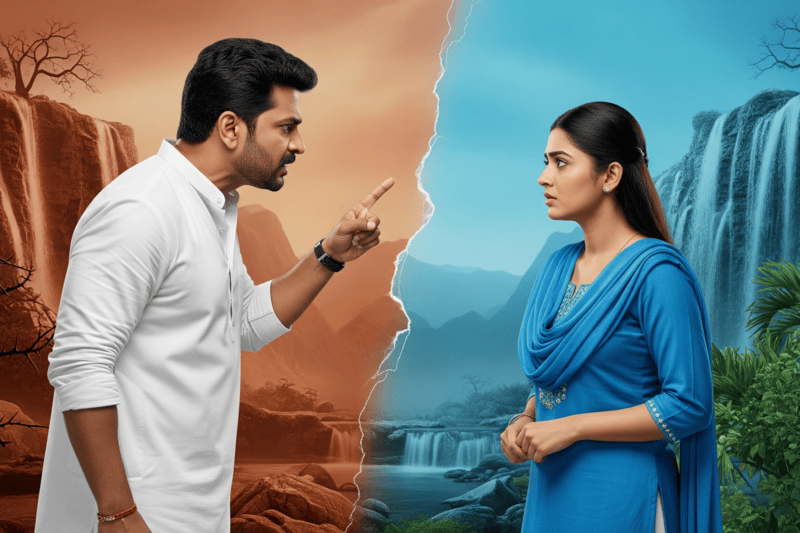
We all wear glasses—crafted by our past, beliefs, fears, and hopes. But we forget that others wear glasses too. Different lenses. Different shades. Different realities.
And when we forget this, we try to impose our lenses on others. But maybe their glasses just show a different shade. Maybe their view isn’t wrong—it’s just… theirs.
Remember the story of the orange cow?
Even Those We Disagree with Believe They’re Right
Here’s a tough truth. Even people we consider morally wrong—sometimes even dangerous—believe in what they’re doing. Their choices make sense to them. Their story of right and wrong, however warped, feels completely justified in their head.
A terrorist believes in their rightfulness. That doesn’t mean we approve of their actions. But it means shouting “you’re wrong” never creates change. If anything, it only deepens their resistance. Think of extremists—be it a terrorist who commits violence in public or someone who inflicts harm in a relationship. Their reasons, however distorted, are real to them. They act from a deep conviction that what they’re doing is justified.
This is not to excuse or accept destructive behaviour. But unless we understand what’s driving it, we have no real chances to intervene or change it.
The louder we shout “wrong,” the more the other person clutches to their view. Why? Because our accusations trigger their defences. It only deepens their resistance. And what could have been a door to transformation becomes a fortified wall.
True change comes only when the heart softens—and that doesn’t happen through judgment. It only happens through understanding.
So, Where Does That Leave Us?
The only real way forward is to understand before correcting. To Accept before intervening. When someone feels accepted—not approved but understood—their walls are lowered. All by itself. They begin to question their wrongs, maybe just a speck. That’s the crack where change begins.
It’s the same with our partners, our children, our communities. It works in marriages, in offices, in therapy rooms, in international negotiations…. everywhere.
Carl Rogers, the father of humanistic psychology, explained that you cannot change another person by rejecting them. You must, first, accept them completely—and that too, unconditionally. Change follows organically. The moment someone feels seen and not judged right or wrong, a new space opens within them. And it is in this space that slow but genuine transformation begins.
This Isn’t Passive. It’s Powerful.

Unconditional acceptance isn’t anything about passivity. It’s the most active way of disarming conflicts. It’s the act of letting go of your sword first, not in surrender, but as a command to the other to drop theirs too. And that command is a sweet one, one the other person wants to obey. They drop their sword not out of compulsion but because of the sheer beauty of your command. The command that can only be born out of unconditional acceptance.
Do you still doubt it? Just hold on. Revelation is on its way.
As it comes along, let’s pause for a moment to take some questions. See how much they mean to you.
- Do I want to be right, or do I want to bring lasting peace and joy?
- Is this a battle to defend my version of truth or an opportunity to expand my vision?
- What if the other person isn’t my enemy but just someone wearing different glasses?
What Might Change If You Tried This?
Try thinking of someone who frustrates you deeply. Not in abstract, but personally. Someone you call stubborn, toxic, irrational. Now pause—and ask:
- What might they be afraid of?
- What belief are they trying to protect?
- What pain could be hiding behind that wall of resistance or those acts of aggression?
You don’t need to fix them. You don’t need to agree either. But can you accept that whatever it is, they are completely right in their own justifications?
Because here’s the truth:

What we see outside is merely a reflection of what we carry inside. And the moment we stop labelling others wrong, we reclaim our power. The power to respond—not react.
The world doesn’t change by making people agree with us. It changes when we start seeing each other as human again.
Start with someone in your life. Someone you’ve been judging. Pause the judgment. Try to understand. Try to accept. Not their actions, necessarily—but their humanness. And then watch how things begin to shift.
So, hold on. Restrain your itch to judge what is right and wrong. Let the discomfort rise. Let it sit. And then… let it soften.
Because peace doesn’t begin with agreement. It begins with understanding. It doesn’t care about who is right or wrong.
Because love doesn’t come from sameness. It comes from acceptance. It comes to fill you even when you are wondering, “Am I right or wrong?”
Remember, the only real way to move forward… is together.
You deserve that peace. So does the person you’ve been fighting against.
And so does the entire world.
FAQs
Often, what feels “right” or “wrong” is shaped more by beliefs, culture, or fear than by any absolute truth. Observing the situation without judgment—seeing the facts and the emotions involved—allows you to respond wisely, rather than reacting based on rigid ideas of right and wrong.
Focus on understanding, empathy, and connection rather than the need to be right. By letting go of the constant mental debate over right and wrong, you create space for clarity, calmness, and better relationships, and begin to act from insight rather than fear or defensiveness.
Guilt arises from attachment to judgments about yourself. When you see right and wrong as subjective stories rather than absolutes, the heavy weight of guilt naturally lifts. This allows you to learn from experiences without self-punishment, and to respond more compassionately to yourself and others.
Right and wrong are rarely fixed; they reflect personal beliefs, past experiences, and emotions. Instead of focusing on labels, pay attention to the consequences of your decisions, the clarity of your intention, and whether your actions cause harm or understanding. This approach brings insight far more than clinging to “right” or “wrong.”
Judging others can create invisible barriers that strain relationships. Recognizing that right and wrong are personal stories rather than universal truths helps you accept people as they are, improving empathy and connection. This does not mean condoning harmful behavior, but observing without letting judgment dominate your interactions.
Overthinking usually comes from identifying too strongly with judgments. By shifting your focus to understanding, learning, and genuine connection, rather than proving yourself right, your mind naturally finds calm. Observing thoughts without attachment allows you to act thoughtfully and maintain inner peace even in challenging situations.
Yes. Releasing rigid judgments creates space for empathy, deeper listening, and authentic connection. Relationships improve not through proving right or wrong, but through understanding and presence. This shift allows you to respond with compassion, reduce conflict, and build trust, making interactions richer and more meaningful.
Arguments often come from attachment to being “right.” When we insist our perspective is the only valid one, we resist seeing other points of view. Letting go of this need allows us to listen deeply, understand the other person, and respond with compassion instead of defensiveness, improving communication and reducing tension.
